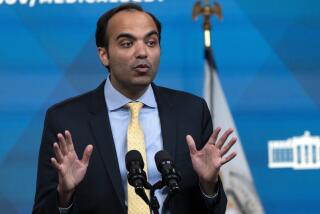Small Business Administration yet to set rules on new loan program
A new federal loan program signed into law five months ago to help small businesses refinance the mortgages on their buildings could help save thousands of firms.
If only the program could get started.
Businesses can’t apply for the loans or even determine if they qualify for them until the Small Business Administration releases rules for the program. The wait is not only problematic for stressed businesses, it’s also eating up time.
As passed by Congress, the program runs for two years — beginning when the law was signed.
“We have less and less time to actually be able to use the program the longer the SBA takes to get the rules out,” said Kurt Chilcott, president of CDC Small Business Finance, a nonprofit lender. “And what that means is there will be a limited number of small businesses that will be able to access the program.”
The SBA, which provides loan guarantees and other help for small businesses, won’t comment on why it’s taking so long to develop regulations for the program. But spokeswoman Hayley Meadvin said officials always expected to release them some time this month.
“We’re still on track to meet that goal,” Meadvin said.
In the meantime, the need is great, said Christopher Crawford, president of a trade group representing nonprofit lenders.
“Not a day goes by that I don’t get two or three calls or e-mails about refinancing,” Crawford said. “How do we keep these businesses from going bankrupt because they simply can’t afford to refinance their debt?”
Thelma Standart, who co-owns the trucking and logistics company XRT Express Reefer Transport in Wilmington, hopes the program will help her refinance, again.
During the depths of the recession when loans came due on the company’s trucking yard, she refinanced with a regular lender. The move saved the business but more than doubled her mortgage payment to $14,000 a month.
Now that a balloon payment on that loan is coming due, relief from the new program could be key. She said it could save her company $6,000 a month.
“It would be primo for us,” Standart said. “We’ve really been struggling.”
But until the rules are released she won’t know if the program will make allowances for people whose credit has suffered during the downturn.
“Unless they put some flexibility in the rules on the credit issue, it’s not going to help a majority of the businesses,” she said.
Other companies are in similar straits.
Jose J. Vega, a lending specialist at the Small Business Development Center in Long Beach, said he requested information on a loan under the new program for a client in September.
“We put this application in, and we were just waiting for the SBA to announce the rules,” Vega said. “We’re still waiting.”
The need for the loans is keenest in regions hard-hit by the poor economy and the real estate crunch, said Jonathan Dowst, a small-business lending executive with Bank of America Corp.
The bank is the largest lender in terms of dollar volume for the SBA’s real estate loan programs, and Dowst said he expected that volume to increase significantly when the new program becomes available.
“Sooner is better,” he said. “But we want the SBA and the government to get this right. There have been times when things have been rushed out quickly and they haven’t worked out all that well.”
Small-business advocates said they understood that it’s complicated to develop regulations for a new program. But they pointed out that nearly a quarter of the allotted lifespan of the program has already passed.
Commercial loans are not like home mortgages that may be paid off over 30 years. Most are short-term, with many coming due in five years or less.
But even that short span is time enough for problems to arise in a down economy. “The property values are now below what they used to be,” Vega said. As a result, the owner may be facing a balloon payment with no way to refinance.
The new loans would allow business owners with little or no equity left in their buildings to refinance for up to 125% of a property’s value. The program will be part of the SBA’s 504 loan portfolio, which is paid for from fees charged to lenders and borrowers, and not by taxpayers.
Congress put a cap on the total dollar amount of new loans in the program at $7.5 billion. The loans are to be funded by nonprofit lenders and commercial banks, and partly backed by the government, which will step in to pay a portion of what’s owed if the borrower defaults.
When the new program does get started, it could be a bonanza for lenders. SBA officials have said it could double the market for commercial real estate loans backed by the agency.
John King, who owns Green Commercial Capital in Roswell, Va., said many in the lending community were angry that it’s taking so long to get the program off the ground.
“It’s going to help a lot of people,” King said. “It’s going to be a real shot in the arm.”
More to Read
Inside the business of entertainment
The Wide Shot brings you news, analysis and insights on everything from streaming wars to production — and what it all means for the future.
You may occasionally receive promotional content from the Los Angeles Times.










